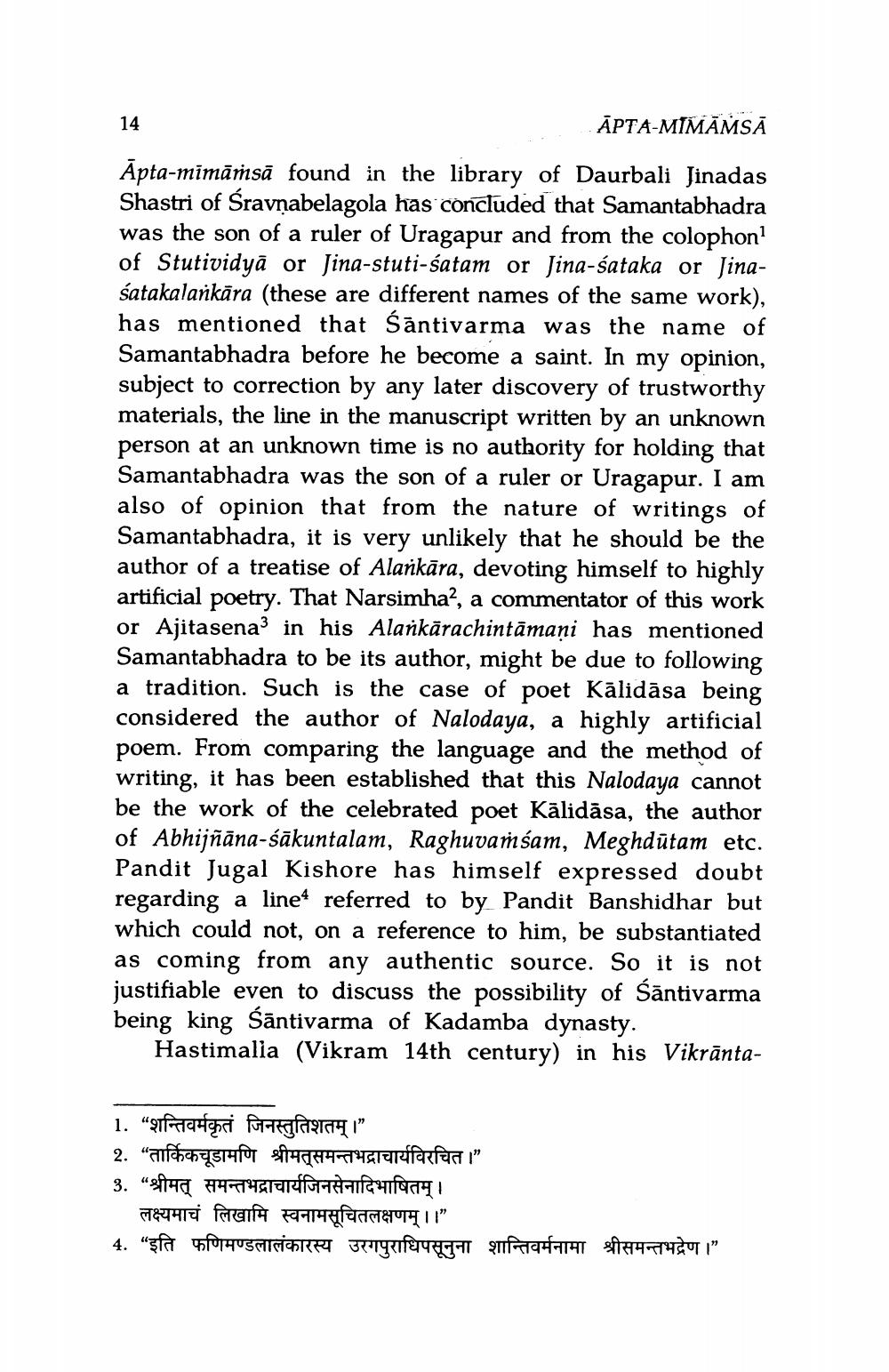________________
ĀPTA-MIMĀNSĀ
Āpta-mimāṁsā found in the library of Daurbali Jinadas Shastri of Śravnabelagola has concluded that Samantabhadra was the son of a ruler of Uragapur and from the colophon! of Stutividyā or Jina-stuti-satam or Jina-śataka or Jinaśatakalarkāra (these are different names of the same work), has mentioned that śāntivarma was the name of Samantabhadra before he become a saint. In my opinion, subject to correction by any later discovery of trustworthy materials, the line in the manuscript written by an unknown person at an unknown time is no authority for holding that Samantabhadra was the son of a ruler or Uragapur. I am also of opinion that from the nature of writings of Samantabhadra, it is very unlikely that he should be the author of a treatise of Alarkāra, devoting himself to highly artificial poetry. That Narsimha?, a commentator of this work or Ajitasena in his Alarkārachintamani has mentioned Samantabhadra to be its author, might be due to following a tradition. Such is the case of poet Kālidāsa being considered the author of Nalodaya, a highly artificial poem. From comparing the language and the method of writing, it has been established that this Nalodaya cannot be the work of the celebrated poet Kālidāsa, the author of Abhijñāna-sākuntalam, Raghuvamsam, Meghdūtam etc. Pandit Jugal Kishore has himself expressed doubt regarding a line4 referred to by Pandit Banshidhar but which could not, on a reference to him, be substantiated as coming from any authentic source. So it is not justifiable even to discuss the possibility of śāntivarma being king śāntivarma of Kadamba dynasty.
Hastimalia (Vikram 14th century) in his Vikrānta
1. “giftrationi forriga taqi" 2. Waifechasi for stralu rarffarfar I" 3. "sia HTTGERT Higa ___ लक्ष्यमाचं लिखामि स्वनामसूचितलक्षणम् ।।" 4. “इति फणिमण्डलालंकारस्य उरगपुराधिपसूनुना शान्तिवर्मनामा श्रीसमन्तभद्रेण।"




